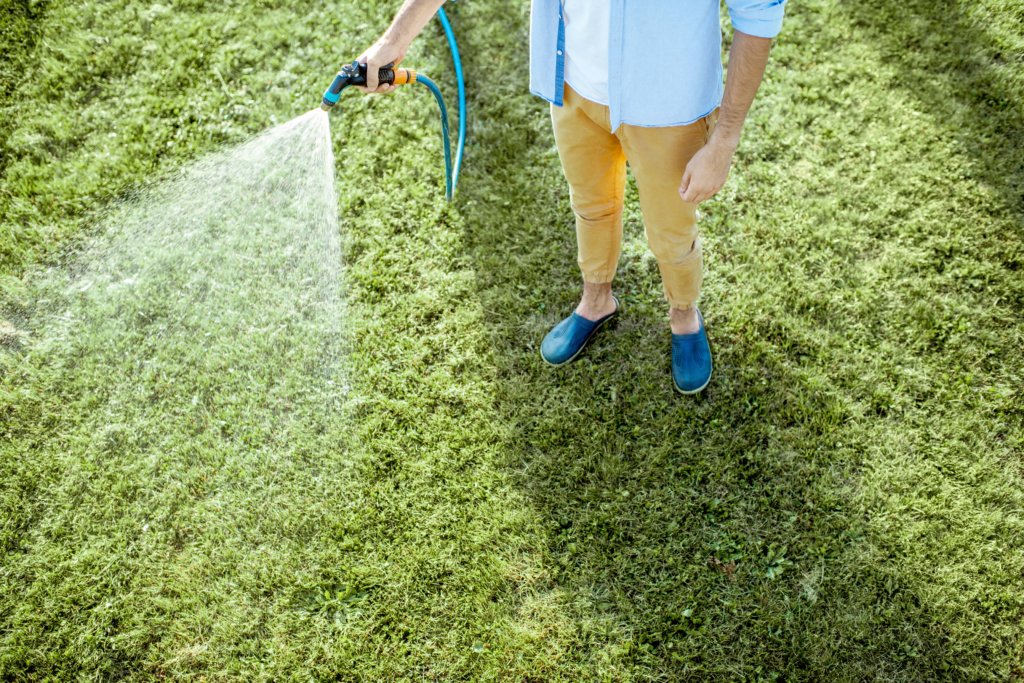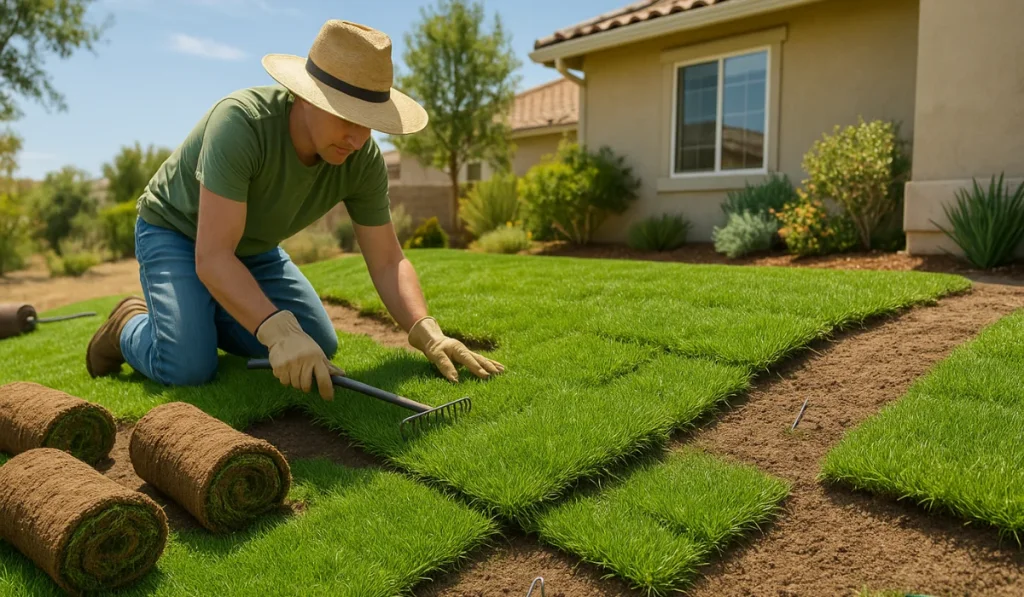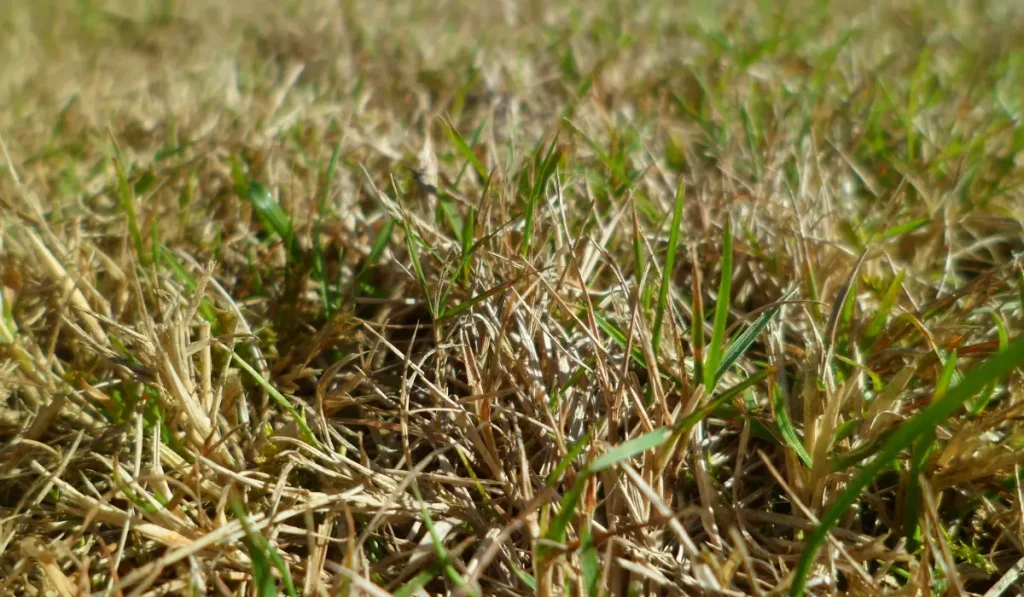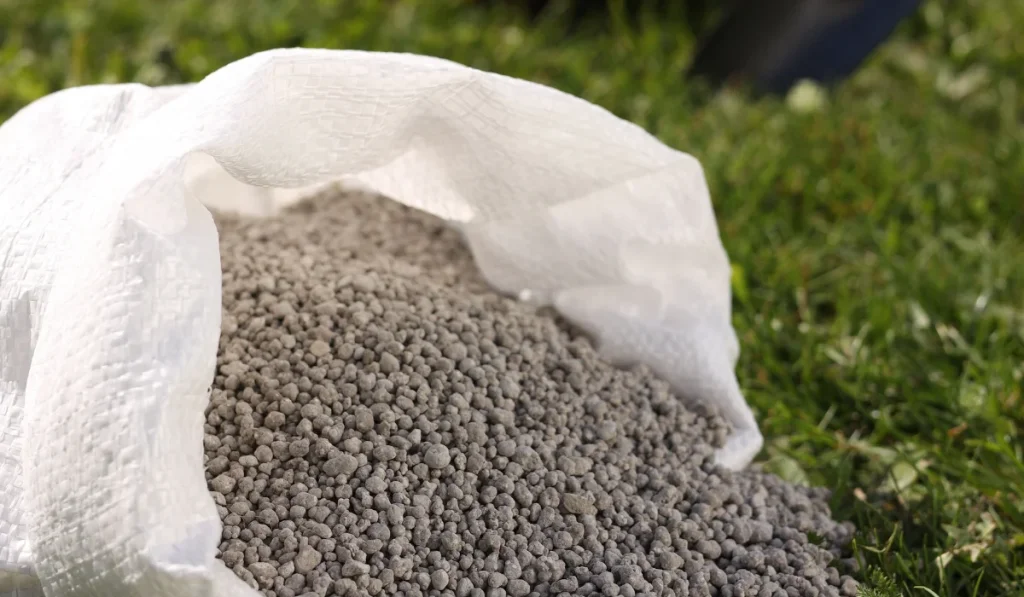How much water does your lawn actually need – and how often should you be watering it?
There are all kinds of variables to consider when it comes to growing a healthy, nice-looking lawn. Without a doubt, water is one of the most important.
Here’s everything you need to know about how often (and how much) to water your lawn to keep it looking lovely and green.
What Time of Day to Water Your Lawn
The best time of day to water your lawn is early, ideally before 10 am. Although it might be way too early for you to drag yourself out of bed, the very best time for you to water your grass is in the early morning, between 4 am and 6 am. This tends to be the coolest part of the day so you won’t have to worry about evaporation immediately after you water.
That’s pretty early in the day so don’t feel bad if you have to set up some sprinklers on a timer to get the job done for you!
If you absolutely can’t water that early in the morning, don’t assume that waiting until late at night will suffice. Although it’s true that you’ll be able to take advantage of cooler temperatures then, too, there’s some risk involved. If moisture is allowed to sit on the grass overnight, it can make it prone to disease.
How Frequently and How Long Should I Water My Lawn?
This is determined by the soil type and sod type you have. In general, in the heat you should aim to soak your lawn on good water schedules, at least 2-3 times per week.
Provide around an inch to an inch and a half of water each week for most sod types. The right amount of water will vary depending on the time of year, what type of grass you have, the type of sprinklers you have, its settings, and of course, the weather where you live.
To get a good idea of how much you actually need to water, check the soil. You want the top six to eight inches to be moist, though not soggy. If you water deeply but infrequently, this will help your grass develop stronger roots that will withstand drought much better than if you were to water every day. Daily short watering can lead to shallow root systems.
The exception to this is if you are watering newly sodded or seeded lawns. These need to be misted lightly once or twice per day.
How do you know if your lawn isn’t getting enough water? It’s simple. The grass blades may look crunchy or brown.
You can also try the screwdriver test. Stick a long-bladed screwdriver six inches into the soil. If you are met with a lot of resistance, it’s time to water. There are also soil moisture probes that can be purchased and used to determine actual soil moisture.
If you need to know how much water your lawn is actually getting, put out a few empty tuna cans. They’re one inch tall, so they work great for checking how well your sprinkler system is working. Turn the sprinklers on and see how long it takes to fill up the tuna can. This will give you a visualization and let you know how many minutes (or how often) you’ll need to water your lawn each week.
Hint: Most all modern lawns sold today do not need to be watered daily. If you need to water daily to keep your lawn “green” in some areas you might have a sprinkler problem or a soil issue.
Make sure you’ve taken a close look at your irrigation system to ensure that the sprinkler heads aren’t pulsating and spraying sidewalks and driveways instead of getting the water where it needs to be – at the root zone of the grass!
•The average American family uses 320 gallons of water per day, about 30 percent of which is devoted to outdoor uses.
•Experts estimate that 50 percent of the water we use outdoors goes to waste from evaporation, wind, or runoff due to overwatering.
•Even before the latest drought, per capita water use had declined significantly—from 231 gallons per day in 1990 to 180 gallons per day in 2010—reflecting substantial efforts to reduce water use through pricing incentives and mandatory installation of water-saving technologies like low-flow toilets and shower heads.
Lawn Watering During Different Seasons of the Year
The time of year plays a big role in how often you should water.
Spring
Depending on where you live, you might not need to water much at all in the spring. There might be enough water in the ground from the melting snowpack to keep your grass hydrated. If that’s not the case – and if it’s especially dry – you may need to give your lawn an inch or so of water per week.
Summer
In the summer, when the days are long and the temperatures are high, you will almost always need to provide supplemental watering. You will need to provide around one to two inches of water (at least) per week. (depending on the grass type)
Fall
As the temperatures start to drop, you only need to provide about half an inch of water per week. (depending on grass type) You may be able to get away with little to no watering if your grass gets what it needs through natural rainfall.
Winter
Many people assume that watering isn’t necessary in the winter – but it really depends on where you live. If you don’t get a hard frost or freeze, your grass may continue growing so you will need to continue watering.
Grass dries out much faster in the summer heat than it does in the winter so you can water much less often. For example if you live in the CA winters you might only water once every 10-15 days depending on rainfall. Of course, if you live in a cold climate and your grass goes dormant, you don’t need to water at all.
Watering Cool-Season Grass vs Warm-Season Grass
Not all grass types are exactly alike in terms of how often and how much they need to be watered.
Warm-season grasses are those that grow best in areas that don’t experience harsh winter temperatures. These grasses have extensive root systems that can penetrate deep into the soil. Because of this, they need to be watered infrequently, but at a deeper depth and warm season grasses are naturally accustomed to hot climates.
Try to water warm-season grasses (including Bermuda and St. Augustine) as infrequently as possible. If you can, just water once or twice a week. Otherwise, you might find that you have an excessive amount of runoff.
If you have a cool-season lawn (like tall fescue, bluegrass, or ryegrass), you will need to water more often. The root systems of these grasses are not nearly as extensive as those of warm-season grasses. You may need to water as often as three times per week, but you won’t have to water as deeply.
How Do I Know if I Overwatered My Lawn?
If your grass feels squishy a few hours after you’ve watered, that’s a good sign that it is way too wet. (Depending on soil type…Clay soils hold water and sandy soils do not.)
Fungal growth, like mushrooms, can indicate that your lawn is too wet.
Note that some types of soil, like clay soil, are more likely to suffer from overwatering than sandy soil might be.
Conclusion
While rainfall can often give your lawn exactly what it needs, the reality is that even an occasional dry spell (and certainly a prolonged drought) can wreak havoc on your plans to go au naturel with your lawn.
Therefore, it’s important to know how much (and how often!) to water your lawn. Hopefully, these tips for proper lawn care will help you grow the most gorgeous lawn imaginable!



